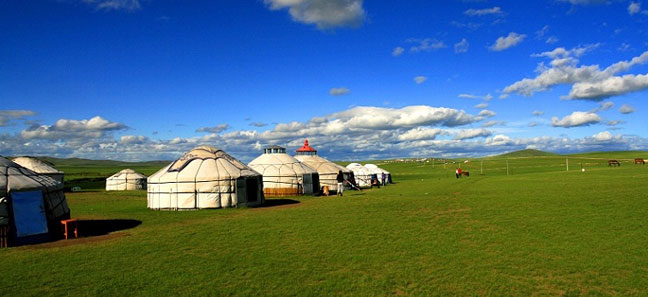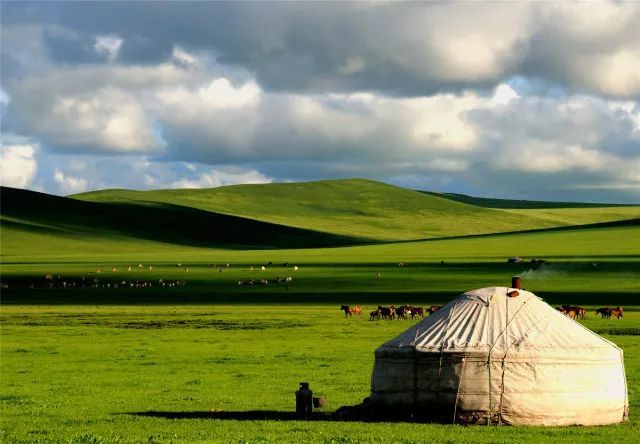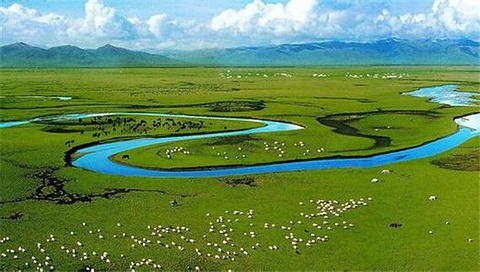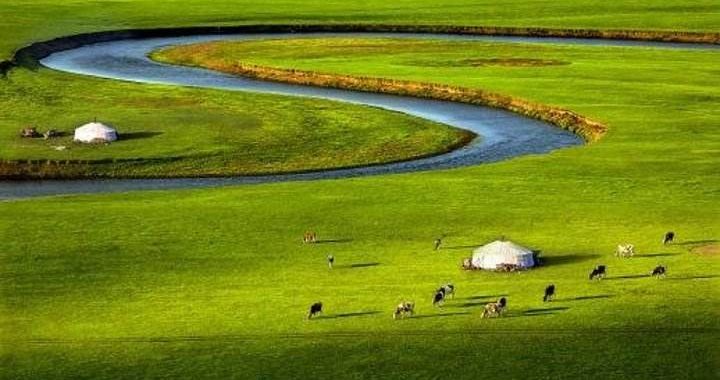Hulunbeier Grassland,Blue Sky,WhitnClouds,and the Prairie
2 min readThe beauty of Hulunbeier Grassland is vividly described in the Chinese poem”The skyis blue and the grassland is boundless;when thegrass bows in the wind.horses and sheep appear inyour eyes.”As one of the most beautiful and fertilegrasslands.Hulunbeier Grassland is undoubtedly a jadein North China on the cockscomb of the rooster-likeChina map.

Covering an area of over 100,000 squarekilometers (386,102 square miles),HulunbeierGrassland is located in northeast of Inner Mongolian Autonomous Region 300kilometers longfrom east to west and 2()0)kilometers(124 miles)wide from south to north.In the expansive grassland.herds of cattle and flocks of sheep are seen chasing each other.shepherd sing songswith whip in his hand,and flowers hloom dazzlingly.All that presents before your eyes is sereneand full of life.lt is the best-preserved grassland in China at present.More than 100 nutritious pastures including clover and needle grass arc lushly grown here.weaving a thick green rug forthe pastureland.It is also far from being polluted,thus the meat.dairy food and fur producedhere are highly favorable.The grass mowed is of high quality and usually exported to foreign countrics.

The derivation of the name”Hulunbeier”is related to a henutitul legend.Once upon a time.there were a lot of ogress in the grassland,who destructed the pasture and killed livestock atrandom.Then,a pretty and brave girl named Hulun and her belovedman called Beier from thelocal Mongolian tribe fought againsl the monsters fezrlesslv.Later.they two became water andnave those monsters drowned.The lovers turned into luo lkes”Hulun”and”Beier nourishingthe pastureland generation after generation.

In addition to the two lakes,there are around 3 000 rivers and hundreds of lakes in different Lhasa and the development of tourism at the lake. Settlements in the area include Dobjoi,Donggar and Cha’gyungoinba. The Tashi Dor monastery is located at the southeastern corner of the lake. Some scenes in the 2002 Hong Kong film The Touch were filmed at the lake. It is often incorrectly written that Namtso is the highest lake in Tibet(or even the world). or the highest salt lake in the world,but there are many smaller lakes at altitudes of more than 5.500m in the Himalayas and in the Andes.For lakes with a surface area of more than 50km, the highest freshwater lake is Sengli Lake at an altitude of 5,386 m and with a surface area of 78km,while the highest saltwater lake is Meiriqie Lake at an altitude of 5,354m with a surface area of 64 km(both are located in Tibet).However,Namtso is the highest lake in the world with a surface area of more than 500 km.
